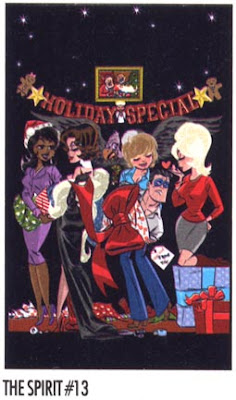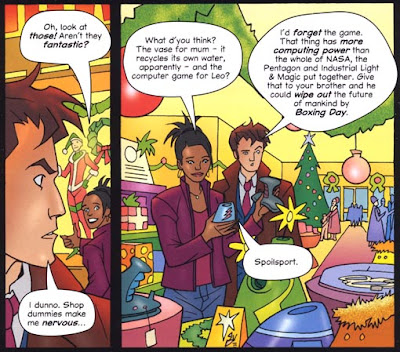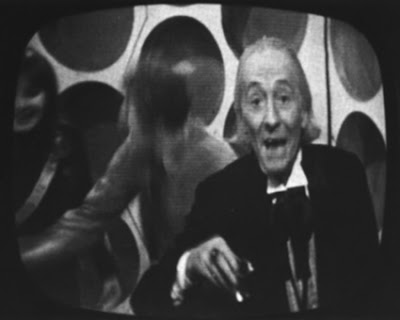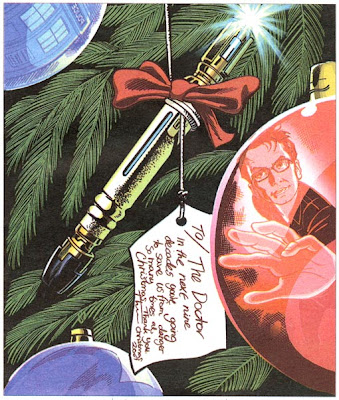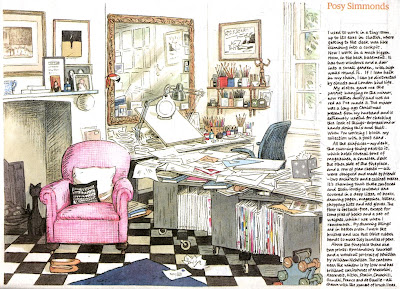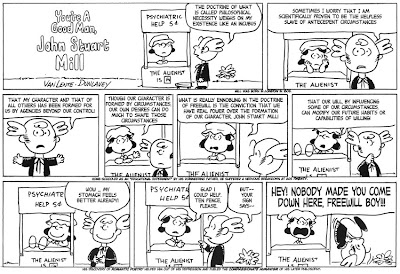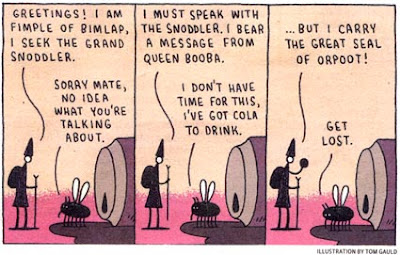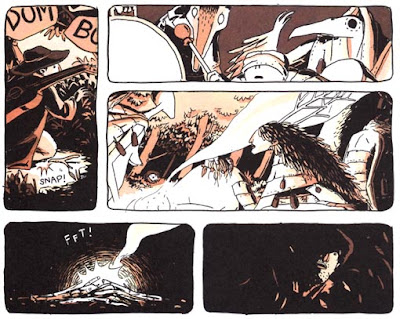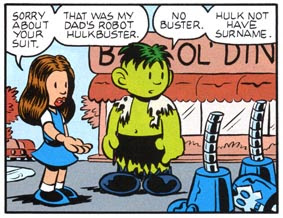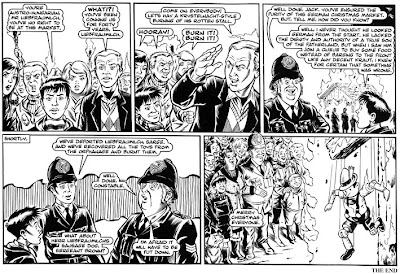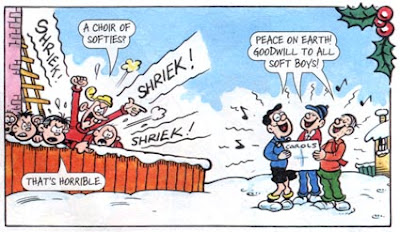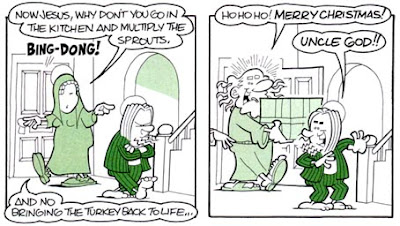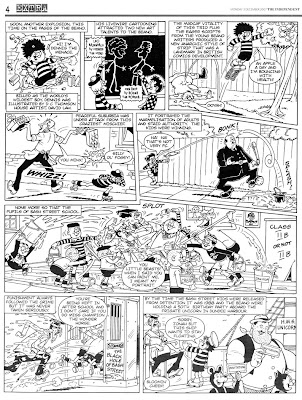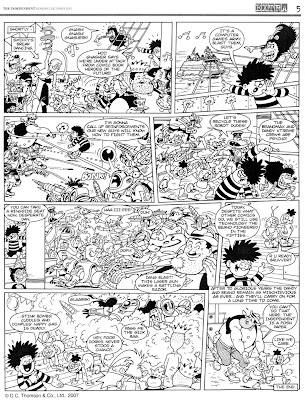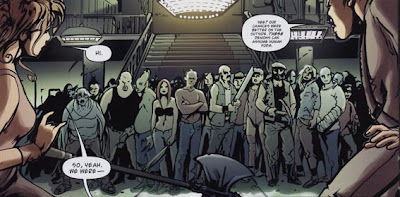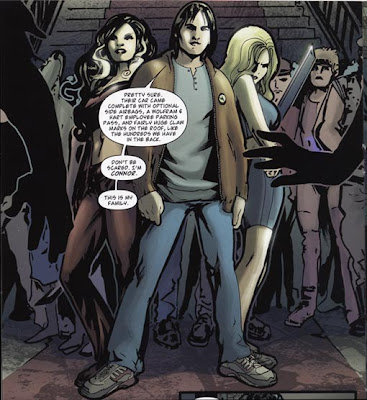This isn’t a “best of 2007” as such, because my tastes aren’t catholic enough to compile one of those, and because I haven’t read everything that might be a candidate for such as list. But here are some of the longer comics, newly published in serial or book form in 2007, that I particularly enjoyed.
Bryan Talbot Alice in Sunderland. A remarkable catherine-wheel essay. My seven-part review starts here.
John Rogers, Raphael Albuquerque and others Blue Beetle. Cheeringly good-spirited superheroics. I reviewed an issue here.
Joss Whedon and Georges Jeanty Buffy the Vampire Slayer Season 8: The Long Way Home. The best adaptation of a television series into comics since at least the heyday of TV21. I reviewed the opening story here, and individual issues here and here. The second main storyline, written by Brian K Vaughn, was a relative disappointment, given its lack of character humour and Georges Jeanty’s inability to draw a good likeness of lead slayer Faith.
Warren Ellis and Raulo Caceres Crécy. An idiosyncratic (and foul-mouthed) history lecture, reviewed here.
Ed Brubaker and Sean Phillips Criminal. Straightforward, noir-ish crime stories – a staple genre in any other medium, but a rarity in comics. Brubaker and Phillips’s work would be good enough to shine even if there was a glut of them. I reviewed one issue here.
Brian Azzarello and Cliff Chiang Dr 13: Architecture and Mortality. Postmodern fun and games, with appealing clear-line artwork. I reviewed it here.
Adam Warren Empowered. The first volume, at least (reviewed here), is an inventive exercise in having your cheesecake and eating it too. The second volume tones down the metatextual games and seems much sleazier for it.
Warren Ellis and Ben Templesmith Fell. Taut, grim policiers. Templesmith’s art works even better depicting the mundane than it does dealing with the undead.

Simone Lia Fluffy. One of the strengths of comics as a medium is the ease with which it can deploy the unreal to give new perspectives on the familiar. Here, a talking rabbit provides Lia with a lens through which to examine parenthood and emotional commitment.
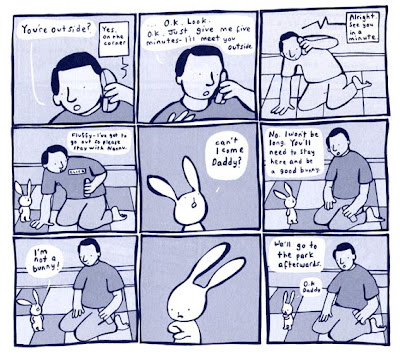
Andi Watson Glister. Frothy and magical. I reviewed the first issue here. The third makes a smooth turn into perfectly-pitched folk tale territory, complete with repetitive tasks and, seasonally enough, the robin as an emblem of resurrection.
Paul Grist Jack Staff. Grist’s sparkling unconventional storytelling is a delight every time, and the use of obvious avatars of old British boys’ adventure comics characters hits my nostalgia buttons. There’s a review of one issue here.
Jeff Parker and Juan Santacruz Marvel Adventures: The Avengers. Funny, inventive and each story self-contained in one issue. Jeff Parker’s work here and on X-Men First Class suggests that superheroics can still be a valid genre for casual readers. One of the best issues was reviewed here.
Warren Ellis and Stuart Immonen Nextwave: Agents of HATE. Superhero comics with all the humour, violence and wild invention of prime 2000AD. Sadly missed.

Andi Watson and Simon Gane Paris. A romance with beautifully appropriate artwork. My review is here.
Joann Sfar and Emmanuel Guibert The Professor’s Daughter. Not new, but newly translated into English. A beautifully painted pulp horror rom-com. Reviewed here.
James Turner Rex Libris. Wacky, literate and visually unique. I reviewed one issue here.
Nick Bertozzi The Salon. A fine piece of storytelling, with something to say about creativity, too. I reviewed it here.
Posy Simmonds Tamara Drewe. The stuff of literary prose fiction, with jokes and pictures. Simmonds’s best long-form work to date. I reviewed it here.
Lewis Trondheim and Fabrice Parme Tiny Tyrant. Not new, but newly translated into English. A glowing jewel of a children’s comic, reviewed here.
Rick Geary A Treasury of Victorian Murder: The Saga of the Bloody Benders. Geary’s meticulous but off-kilter non-fiction series moves into the nineteenth-century American countryside to find it just as disturbing as the cities.
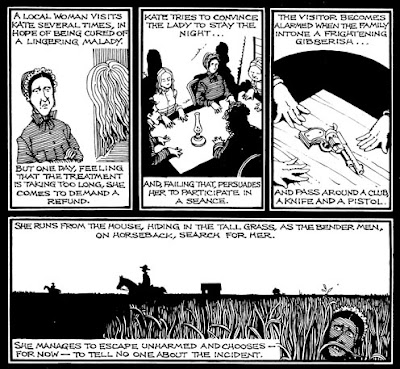
Nicholas Gurewitch The Trial of Colonel Sweeto and Other Stories. A compilation of Gurewitch’s Perry Bible Fellowship strips (see the link in the web comics section of the side-bar). Simultaneously funny and disturbing; a Terry Gilliam in candy colours.
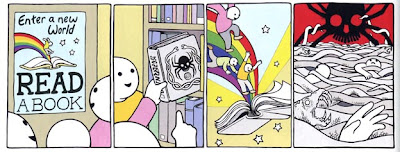
Various The Wallace and Gromit Comic. Gone, alas. See this review for why I miss it.

